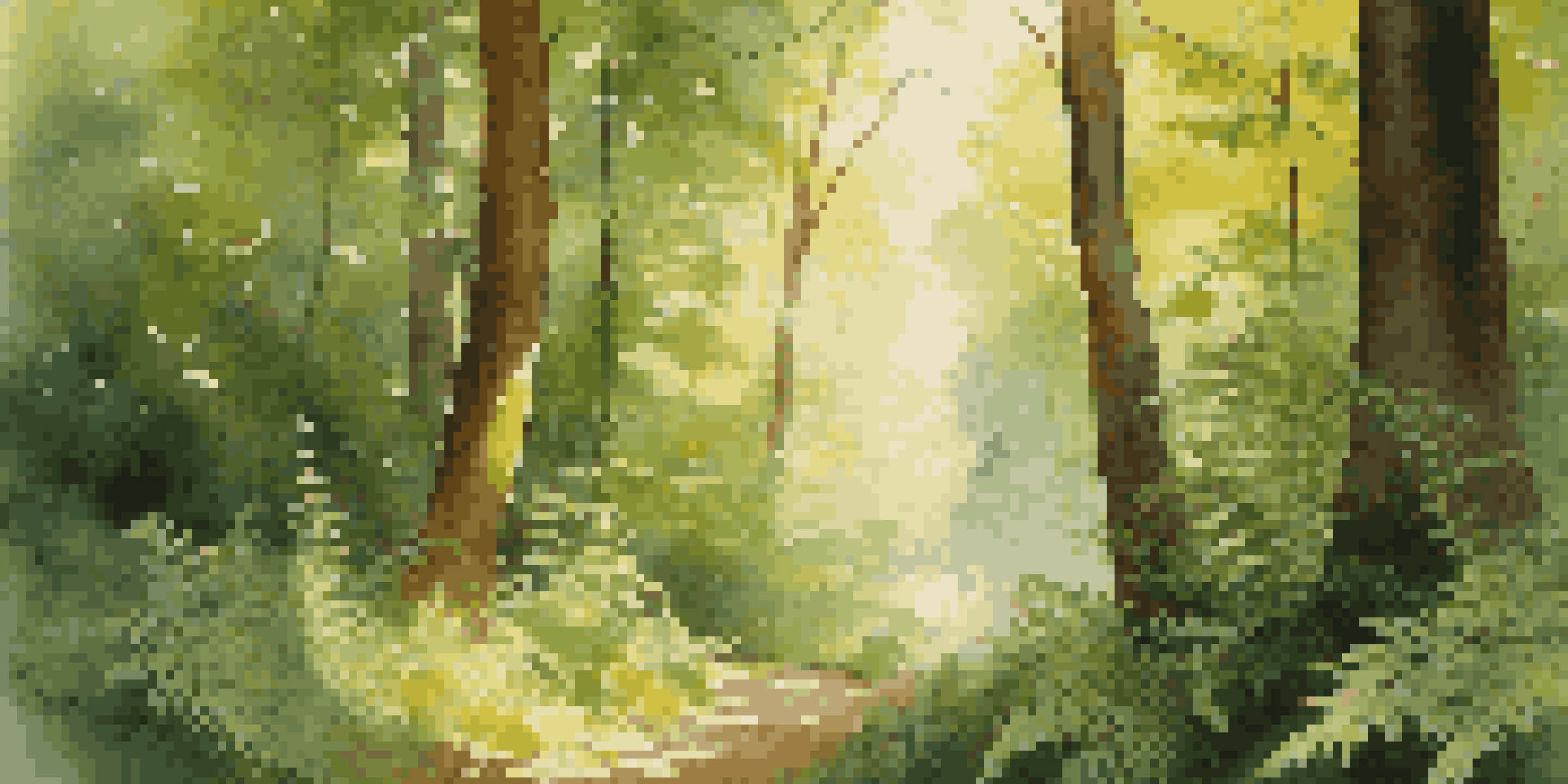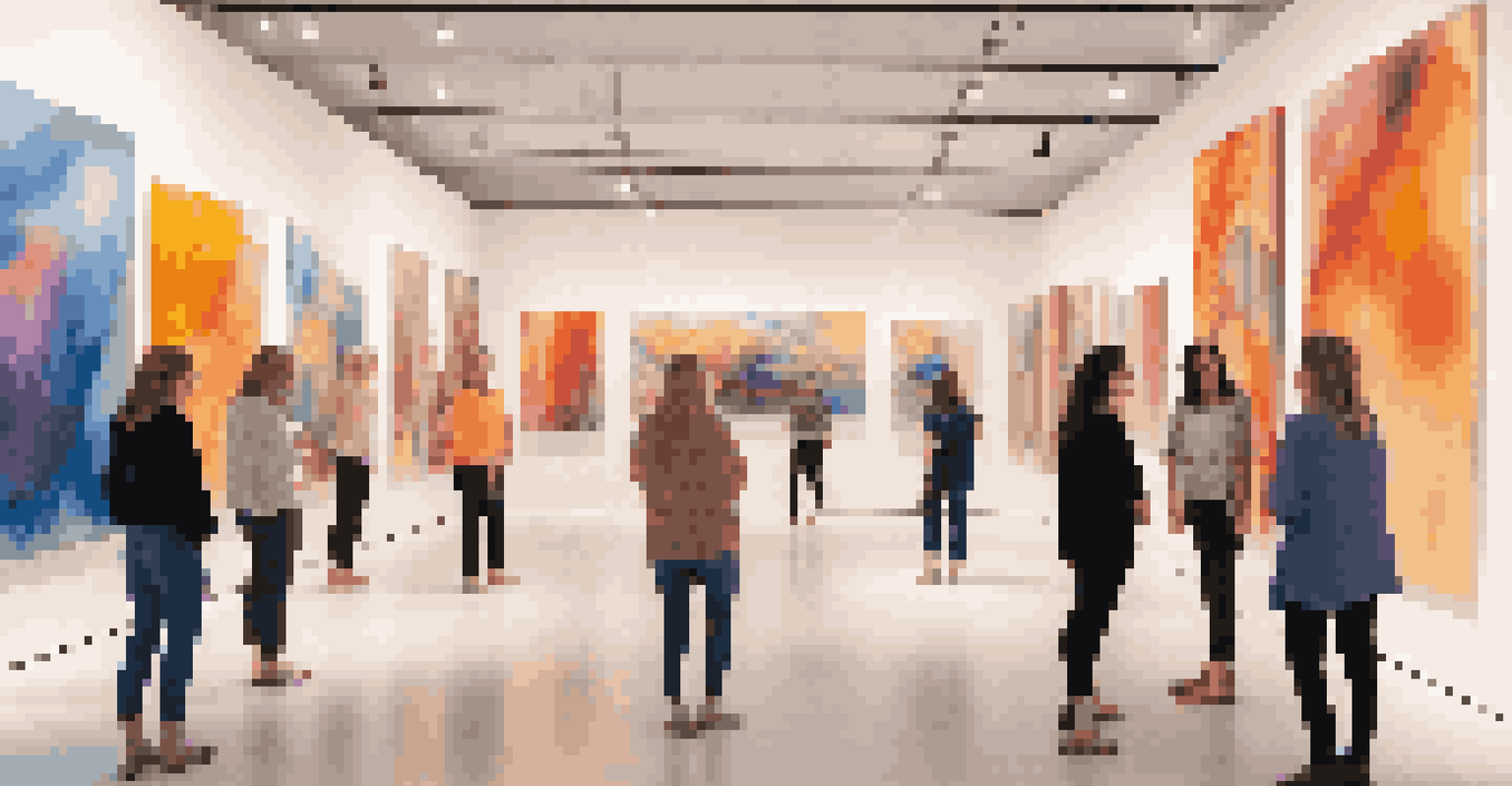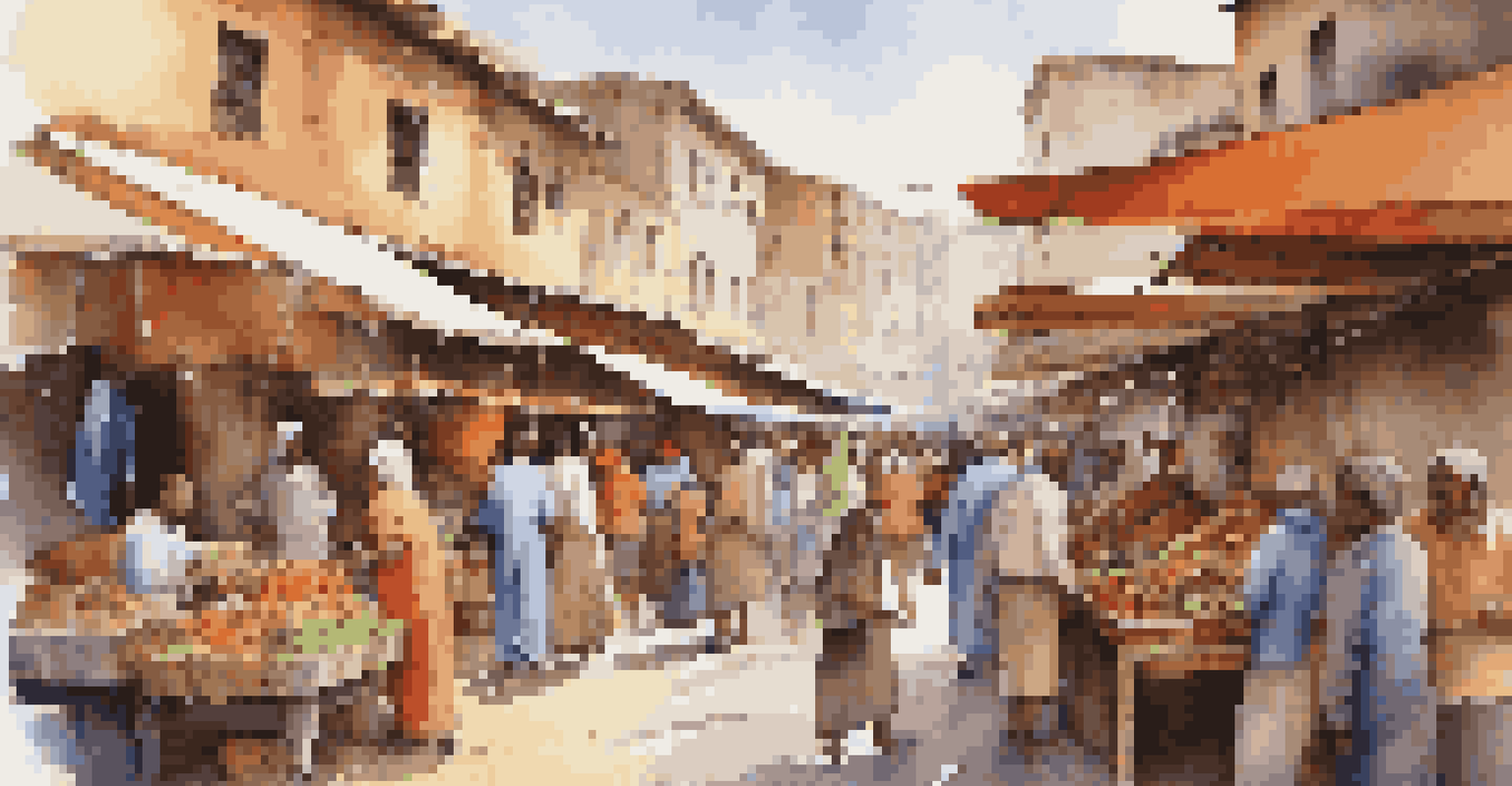Soundscapes: The Unseen Partner in Visual Art

Understanding Soundscapes and Their Impact
Soundscapes refer to the auditory environment and can shape our perceptions. Think about how a bustling city sounds compared to a serene forest; both create distinct atmospheres. In visual art, soundscapes can enhance the viewer's experience by adding layers of meaning and emotion.
Sound is the vocabulary of the imagination, and it is the art of sound that speaks to us in a language beyond words.
The connection between sound and sight is powerful. For instance, a painting of a stormy sea might evoke feelings of chaos, but when paired with the sound of crashing waves, those feelings amplify. This interplay can transform a static visual into a dynamic experience.
Artists are increasingly recognizing the importance of sound in their work. By incorporating soundscapes, they create a multi-sensory experience that invites viewers to engage on a deeper level. This fusion of sound and sight can tell stories that visuals alone might not convey.
The Historical Context of Sound in Art
Throughout history, artists have explored the relationship between sound and visual art. From ancient rituals that combined music and dance with visual displays to modern installations that use sound as a medium, this connection is longstanding. It highlights how cultures have always intertwined sensory experiences.

In the 20th century, artists began experimenting with sound more deliberately. Think of composers like John Cage, who challenged traditional notions of music and introduced ambient sounds into his work. This innovation paved the way for visual artists to consider how sound could play a role in their pieces.
Soundscapes Enhance Art Experiences
The integration of soundscapes with visual art creates a multi-sensory experience that deepens viewer engagement and emotional connection.
Today, sound art is a recognized genre, with many galleries dedicated to sound installations. This evolution shows how sound can complement visual narratives, creating a richer tapestry of artistic expression. The history of sound in art underscores its enduring significance.
Creating Immersive Experiences with Sound
Immersive art experiences are becoming increasingly popular, with soundscapes playing a vital role. Imagine walking through a gallery where the sound of rustling leaves surrounds you as you view nature-inspired art. This kind of setup invites deeper engagement and emotional connection.
Art is the most beautiful of all lies; it is a manifestation of our imagination, a merging of senses that gives us a glimpse of the infinite.
Technology has made it easier for artists to incorporate sound into their work. Virtual reality (VR) installations, for instance, can transport viewers to different worlds where visual art and sound interact seamlessly. This combination can evoke feelings ranging from tranquility to exhilaration.
The immersive quality of soundscapes can also evoke memories and nostalgia. A familiar sound can transport someone back to a specific time and place, enhancing the emotional resonance of the visual artwork. This connection is what makes immersive experiences memorable and impactful.
Soundscapes as Storytellers in Visual Art
Soundscapes can function as a narrative tool in visual art, guiding viewers through a story. For example, an artist might use the sound of a heartbeat to represent life and emotion in their piece. This auditory element can evoke a strong reaction and deepen the viewer's understanding.
Consider a visual art piece depicting a bustling marketplace. When accompanied by the sounds of chatter, footsteps, and music, the artwork transforms into a lively scene, bringing it to life. The soundscape helps to contextualize the visual elements, enriching the storytelling aspect.
Technology Transforms Art Interaction
Advancements in technology allow for interactive sound installations, enabling viewers to manipulate sound and personalize their artistic experience.
By using sound as a narrative device, artists can engage multiple senses simultaneously. This multi-sensory storytelling can create a more profound impact, allowing viewers to feel the story rather than just see it. It's a powerful way to convey themes and emotions.
The Role of Technology in Merging Sound and Art
Advancements in technology have opened new avenues for merging sound and visual art. Tools like sound design software and interactive installations allow artists to explore sound in innovative ways. This technological integration is redefining how we experience art.
For instance, artists can now create interactive exhibits where viewers can manipulate sounds themselves. This not only enhances engagement but also allows for a personal connection to the artwork. The ability to influence sound adds a layer of interactivity that traditional art forms may lack.
Moreover, digital platforms enable artists to reach wider audiences with their soundscapes. Online exhibitions can incorporate sound in ways that traditional galleries might not, broadening accessibility. This evolution showcases how technology continues to shape the future of art.
Emotional Resonance Through Soundscapes
Soundscapes evoke emotions that visuals alone may not achieve. Think about how a haunting melody can stir feelings of sadness, while upbeat rhythms can spark joy. This emotional resonance is crucial in enhancing the viewer's experience with visual art.
Artists often curate soundscapes to align with the themes of their work. A piece exploring loss might include soft, melancholic sounds, while one celebrating life could feature lively, vibrant tunes. This intentional pairing can create a deeper emotional connection.
Emotional Impact of Sound in Art
Soundscapes can evoke emotions that visuals alone may not achieve, enhancing the overall impact and resonance of the artwork.
The impact of sound on emotion is not just subjective; it's backed by research. Studies show that sound can influence mood and perception. Understanding this relationship helps artists harness soundscapes effectively, creating artwork that resonates on a more profound level.
The Future of Soundscapes in Visual Art
As the art world continues to evolve, soundscapes will likely play an even more prominent role. Artists are increasingly aware of the power of multi-sensory experiences, leading to innovative collaborations between sound artists and visual creators. This trend promises to enrich the artistic landscape.
Moreover, as audiences become more accustomed to immersive experiences, the demand for art that engages multiple senses will grow. This shift could encourage more artists to experiment with sound in their work, pushing boundaries and redefining artistic expression.

In conclusion, the future is bright for soundscapes in visual art. As artists embrace this unseen partner, we can expect to see more captivating works that challenge our perceptions and deepen our emotional connections. The fusion of sound and visual art is an exciting frontier waiting to be explored.